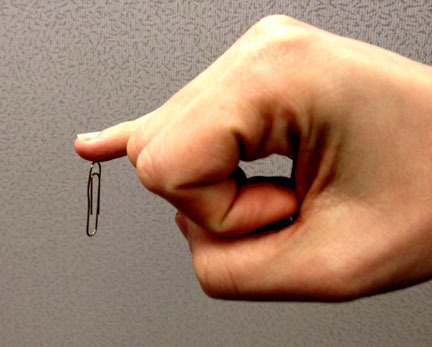
In the 1970s, "The Six Million Dollar Man" said of Steve Austin's broken human body, "We can rebuild him, we have the technology." Except that it was a fiction, and we still don't have the technology. Some transhumanists are tired of waiting. They want to make human bodies better -- now -- and a few are willing to go to extremes to do it.
Generally speaking, the transhumanist movement envisions using science and technology to surmount humanity's natural limitations. The most famous transhumanist of the moment is probably Peter Thiel, a founder of PayPal who in 2006 invested $3.5 million into the Methusaleh Foundation, a group that is looking for an alternative to aging. Other transhumanists include Robert Ettinger, who invented cryonics, and Ray Kurzweil, who first proposed the digital "singularity."
But many transhumanists aren't up for actually doing radical body modification. After all, even common body modifications like magnetic fingertip implants arepainful and potentially dangerous, and anesthetics for such modifications are off-limits in the U.S.
That's where Grindhouse Wetwares comes in.
Started in 2012, this self-described "rag tag" group of Pittsburgh, Pa.-based "programmers, engineers and enthusiasts" has made it their mission to bring affordable, DIY, "scrapheap transhumanism" to the U.S., or as they put it on their website, "augmenting humanity using safe, affordable, open source technology."
Grindhouse Wetwares' members have their share of body modifications, or "biohacks," and have even invented a few of their own that they've shared with the larger biohacking community, such as an implantable chip to store biomedical dataand a sensor array that sends data to one's finger-magnet.
The Huffington Post interviewed Grindhouse Wetwares' project manager, Lucas Dimoveo, via email.
How'd your operation get its name? What's a grindhouse and what's wetware?
The term "grinder" comes from the ... comic "Doktor Sleepless" -- it is a subculture of technophiles that hack their bodies with technology out of dissatisfaction with the promises of futurism. A common view espoused by grinders in the comic is, "Where is my [expletive] jetpack?" -- an idea quickly taken up by young and disillusioned transhumanists.
"Wetware" is a shorthand for biology or biological systems. "House" represents a common banner under which passionate individuals can gather and hack their bodies to work towards a fair, transhuman future.
Why do you mod?
Enhancing the body to use more of its potential is our main motivation for modifying our bodies and minds. We are required to sleep a certain amount of time or cognitive function begins to deteriorate. Out of the whole electromagnetic spectrum, we can only sense a small portion. Our bodies, even at our youngest and most vibrant years, are still capable of disease and injury. This is an area that grinders share with "traditional" transhumanists.
Many grinders were followers of one science-fiction universe or another, and we are disappointed that the future we've been promised as children hasn't been actualized. The promises of mind-uploading and nanotechnology common in futurist circles haven't satiated us either. We want the future now.
Do any of you have body modifications? If so, what mods have you got?
Most members of Grindhouse Wetware have a number of piercings, tattoos and other bells and whistles on or attached to their body. Roughly five of us have magnet implants. Two or three of us don't have any sort of modifications or body art.
Are there any mods you want but can't have for some reason? Any mods you would never get?
Most mods that grinders want are not unlike those desired by the majority of the transhumanist community. Modular and redundant organ systems, a nervous system spread out across the Internet (ex: Kevin Warwick's cyborg program), and a variety of brain augmentations are at the top of the grinder wish list. Most of these are impossible at this time due to limitations in technology.
Each individual in the community has a limit to which they would augment themselves. Some would stop at joining their brains with others in a hive-mind, others shrink at the idea of removing sex or sexuality, and some even advocate retaining some amount of biology.
How safe is what you're doing? Have you done implants in your lab? What safety procedures have you implemented?
The most basic grinder modifications are as safe as a typical invasive body-art implant. More complex implants being developed by grinders have added risk due to possible malfunctions with electronic components. Various safety features such as kill-switches and early warning systems are being used in the event of implant failure. A full procedure of our safety protocols, as well as hardware safety features are generally released with each project in the grinder community.
Hufftington Post
No comments:
Post a Comment